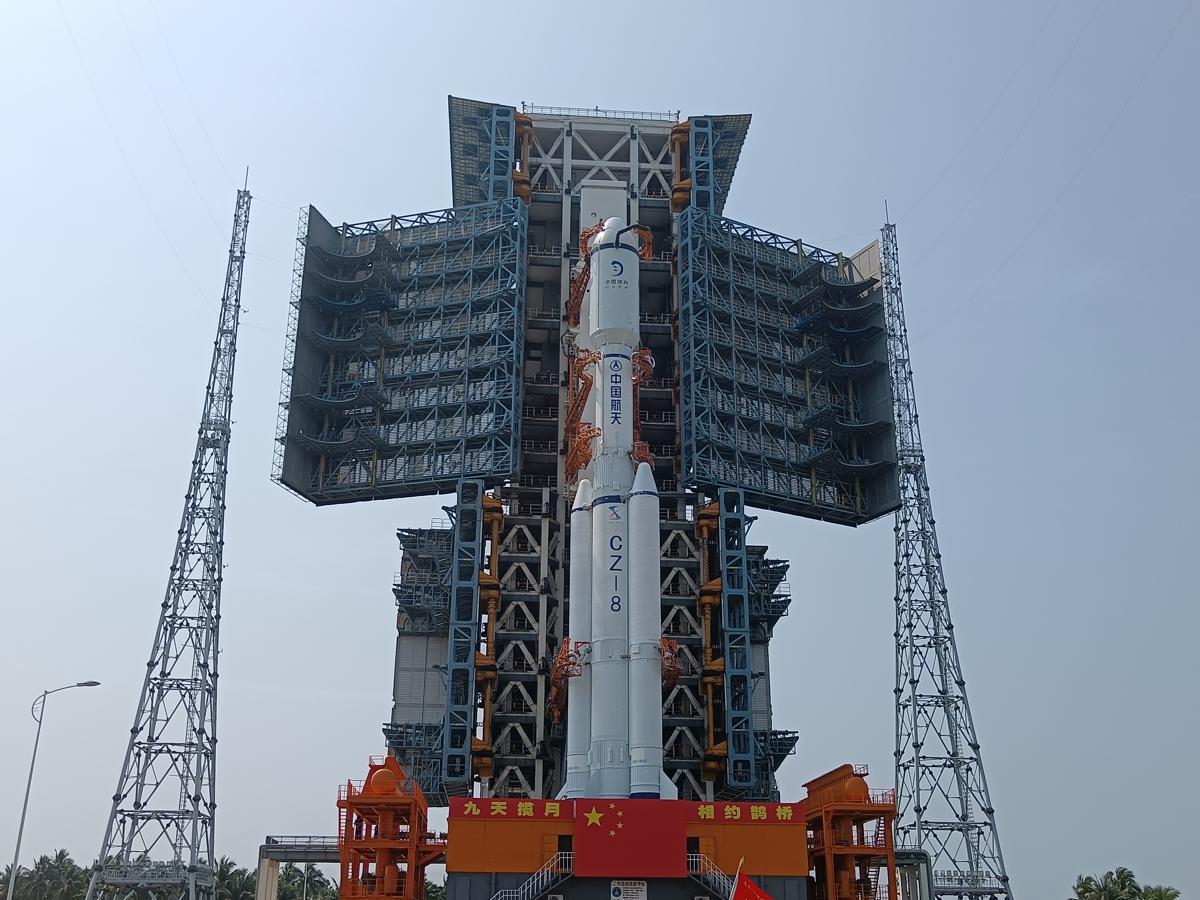Rocket sends Queqiao 2 relay satellite to lunar orbit

The relay satellite Queqiao 2 and the Long March 8 carrier rocket are vertically transferred to the launch area of the Wenchang Space Launch Center in Hainan province on Sunday. [Photo/Xinhua]
China launched a relay satellite on Wednesday morning to lunar orbit to pave the way for the space power's prospective trailblazing expeditions to the moon.
The Queqiao 2, or Magpie Bridge 2, satellite was lifted atop a Long March 8 carrier rocket that blasted off at 8:31 am from a coastal launch pad at the Wenchang Space Launch Center in China's southernmost island province of Hainan.
After a short flight, the satellite is programmed to be released from the rocket and will then enter into a lunar transfer trajectory.
In the next few days, the spacecraft is scheduled to carry out a series of maneuvers such as a mid-course trajectory correction and a braking operation before it enters an elliptical frozen orbit around the moon to become the second relay satellite above the silver celestial body.
After its arrival in the predetermined orbital position, Queqiao 2 will conduct two-way communication tests with the Chang'e 4 probe that is on the lunar surface and the Chang'e 6, which is waiting for launch at the Wenchang center, to examine its performance, according to space officials.
Developed by the China Academy of Space Technology, Queqiao 2 is based on the CAST2000 satellite framework. It weighs about 1.2 metric tons and has two major payloads - a 4.2-meter parabolic antenna for communications with lunar probes and a 0.6-meter parabolic antenna used to transmit data to the ground control.
Queqiao 2 is primarily tasked with relaying signals and data between the Chang'e 6 robotic mission, which has been scheduled to be launched by a Long March 5 heavy-lift rocket before July.
In the long term, the satellite will also serve the Chang'e 7 and 8 missions that will be the basis for an ambitious multinational plan known as the International Lunar Research Station to be constructed in the 2030s.
Wednesday's flight marked the third mission of the Long March 8, a medium-lift rocket designed and built by the China Academy of Launch Vehicle Technology, and the first time the type has been used in a lunar mission.
To ensure a successful launch, engineers at the academy designed six flight plans in case that the most preferred launch date is postponed due to bad weather or other unfavorable situations.
They also worked out a new technology that enables the rocket to withstand the effects of upper-atmospheric winds, which often cause hazards to a vertically flying craft.
Moreover, engineers placed additional heat-proof paint-coat on the Long March 8 to offset the extreme heat that challenges every rocket bound for lunar transfer trajectory, according to the academy.
Photos
Related Stories
- China sends 9 satellites from sea
- Beijing steps up efforts on commercial aerospace
- China's new-generation reusable rockets eye maiden flight by 2025, 2026
- China accelerating development of two large reusable rocket models
- Carrier rocket for China's Queqiao-2 arrives at launch site
- Program targets lunar resources
Copyright © 2024 People's Daily Online. All Rights Reserved.









